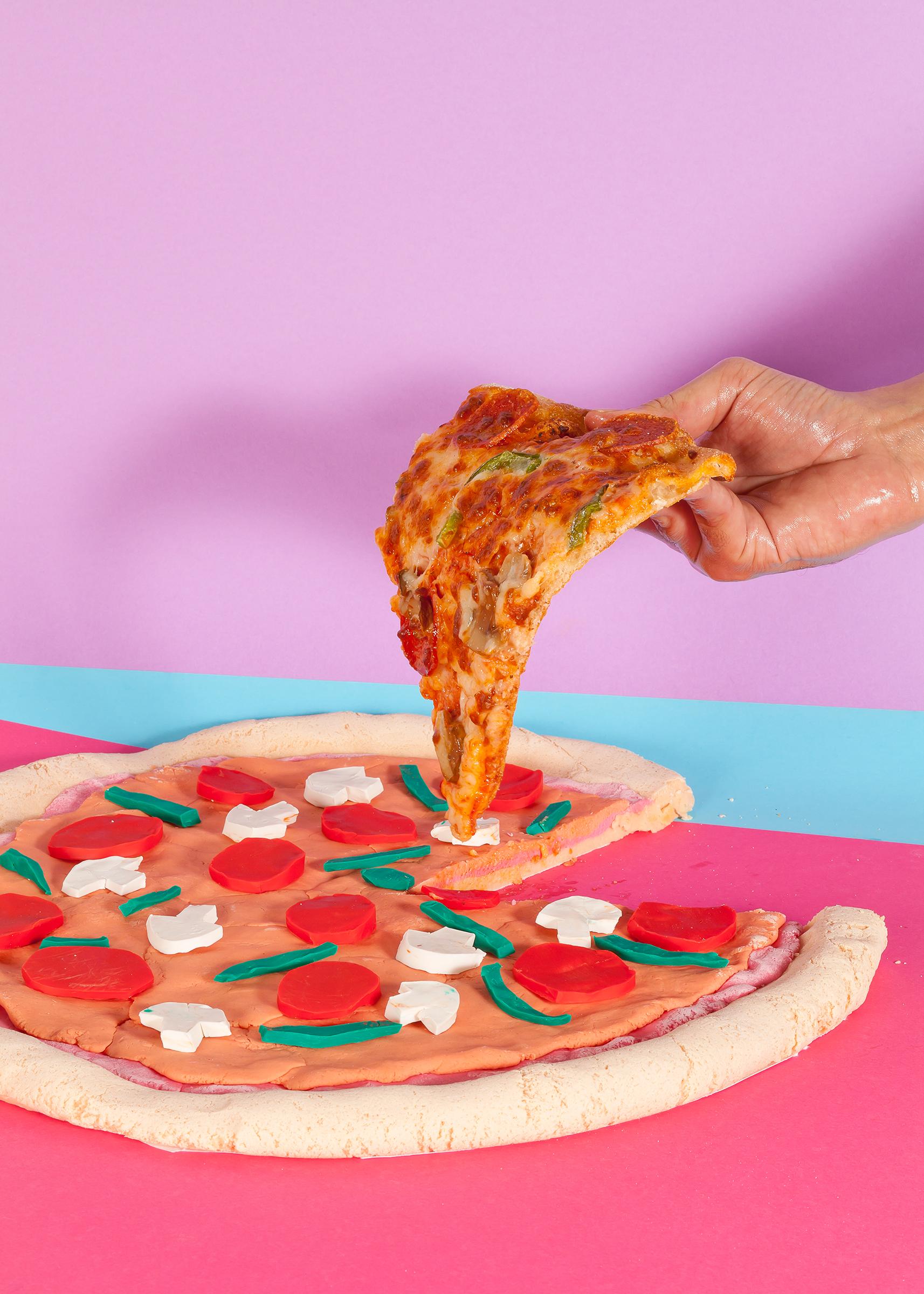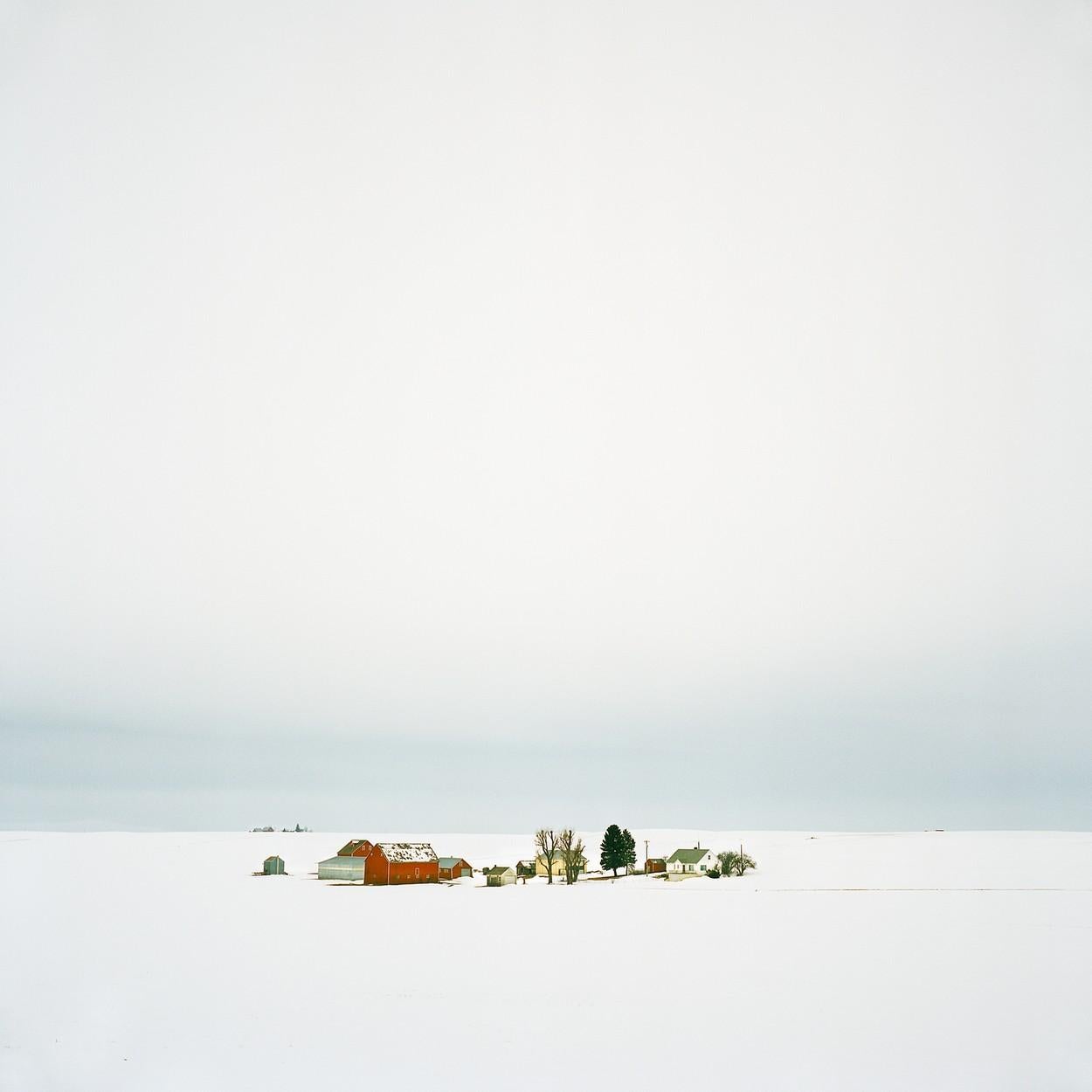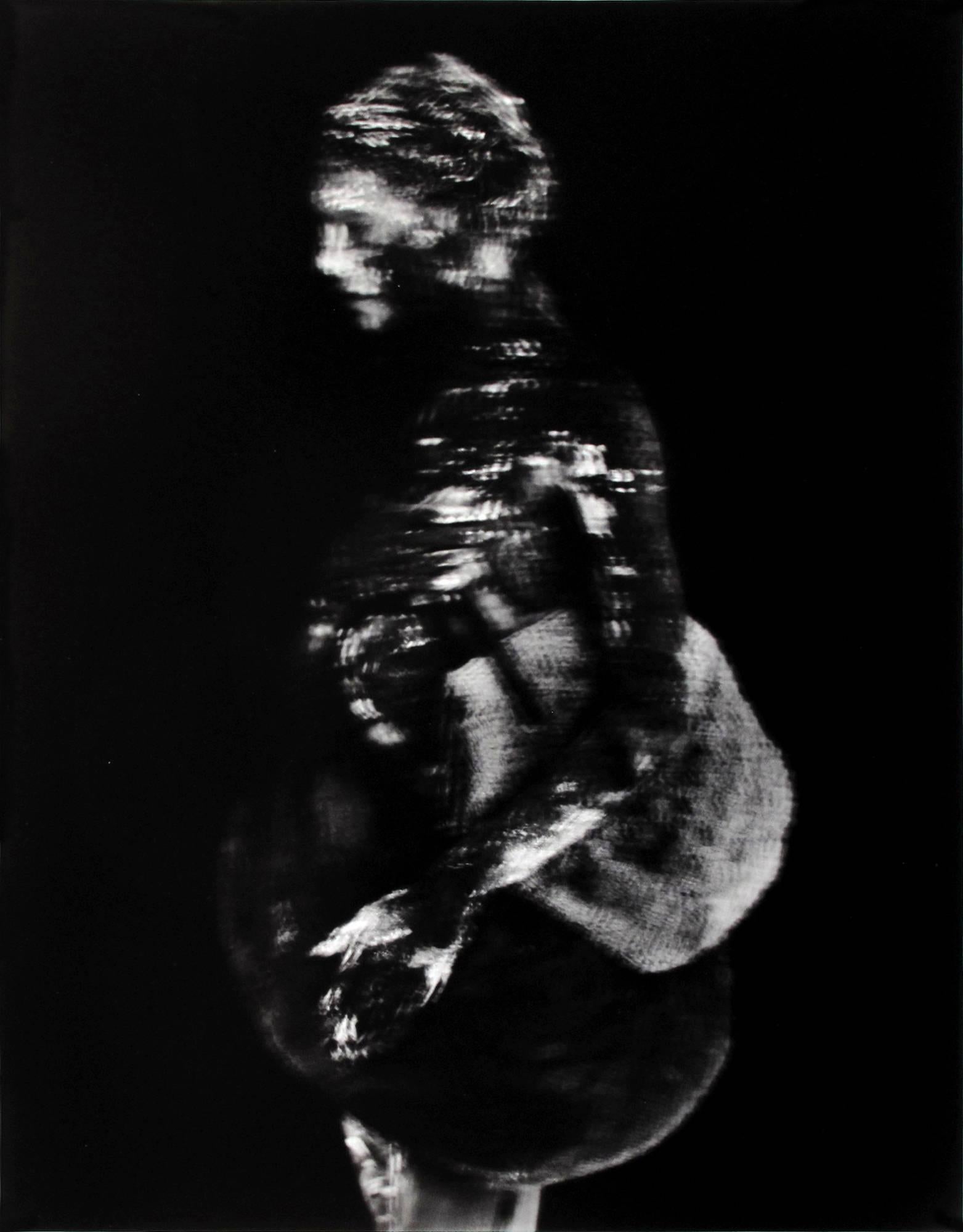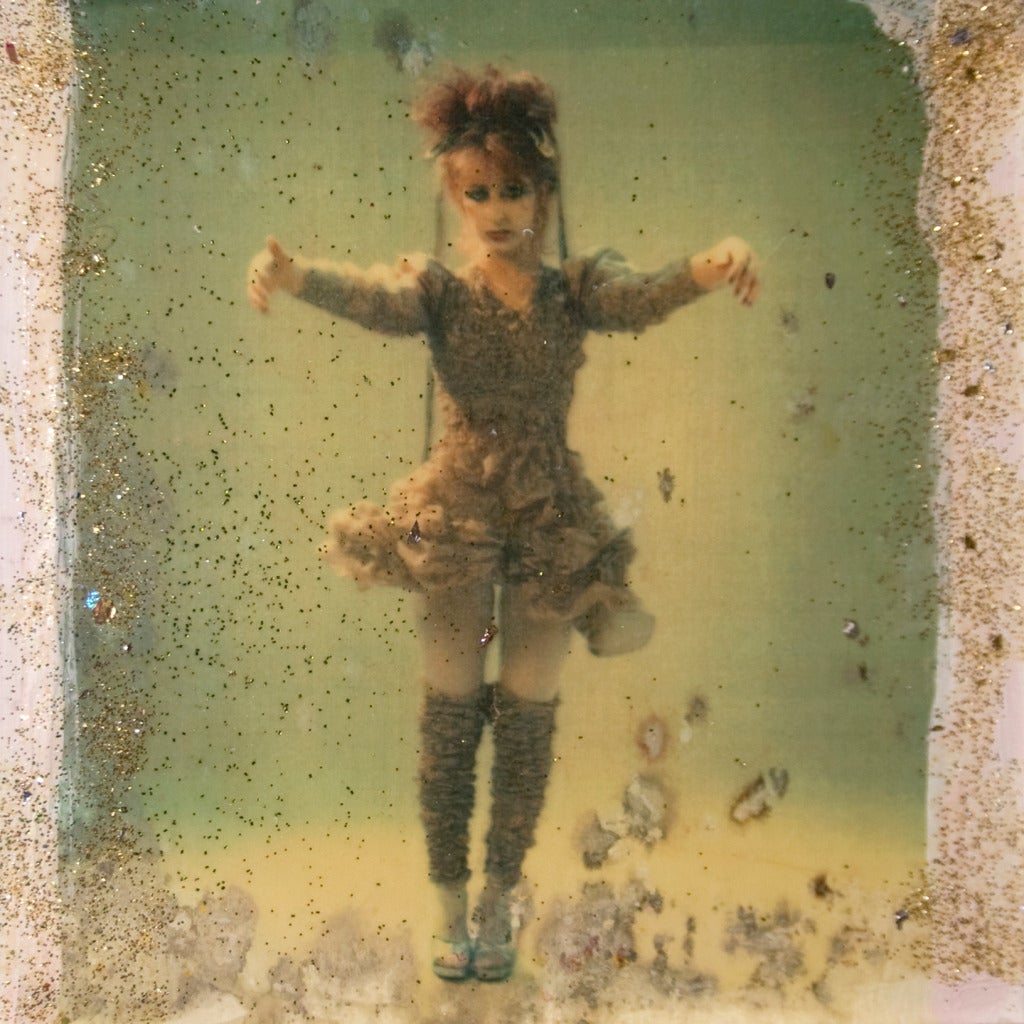Items Similar to Rare Harry Bowers Vintage C Print Photograph From Ten Photographs Fashion Shot
Want more images or videos?
Request additional images or videos from the seller
1 of 11
Harry BowersRare Harry Bowers Vintage C Print Photograph From Ten Photographs Fashion Shot1984
1984
About the Item
HARRY BOWERS
T E N P H O T O G R A P H S
I DON'T LOOK FOR PHOTOGRAPHS I INVENT THEM
I recall my first meeting with Harry Bowers in California a few years ago. As he produced his large-scale prints, I was at first flabbergasted, not only by their size, but by their seamless perfection. Technique appeared to be everything but then technique as technique simply vanished. After the first moment, technique was no longer an issue, but rather a passageway to the imagery.
Suffice it to say about Harry Bowers' working style that he is an obsessive man. Trained as an engineer, he has turned that discipline to art. His lenses, equipment and darkroom, much of it exactingly manufactured by himself to answer certain needs, serve the desire of the artist to take photographic technique to its ultimate perfection in invisibility and transparency. I respect obsession in art, and particularly in photography, because obsession in photography passes beyond the easy, middle ground of image making to a more demanding, more difficult, yet more rewarding end. Bowers' obsession is to eliminate "photography as technique." No grain, no decisive moments, no journalism, or, seemingly, direct autobiographical endeavors appear in his work.
Bowers is an artist of synthesis who controls his environment if only in the studio exactly to his liking. The images he creates are formal structures, saucy stories on occasion, which may offer hints of a darker, more frightening sexuality, but what you see is the end product of an experiment in which nothing save the original insight perhaps is left to chance.
We seem fascinated with the idea of replication of reality in art. Popular painting frequently reproduces a scene "with the accuracy of a photograph," and photographs may "make you feel as though you were right there." The very invisibility of the photographic medium is important to Bowers, in that it allows him to maneuver his subject matter without concern for rendering it in an obvious art medium which would interfere with the nature of the materials he uses. The formal subtleties of Bowers' recent work are as delicious and ambiguous in their interrelationships as the best Cubist collages, yet while those collages always suggest their parts through edge and texture, these photographs present a structure through a surface purity.
Bowers' earlier works, for example, the Skirts I Have Known series, were formed of bits of clothing belonging to Bowers and his wife or found at local thrift shops. These works fused an elegance of pattern and texture, reminiscent of Miriam Schapiro or Lucas Samaras fabric paintings, with a sense of theater and, on occasion, high eroticism. These clothes are not simply mashed like baled rags into the glass fronted box which fronts the picture plane, but are actors in a subtle dumb show. Early on, Bowers was surprised that so few people took notice of the erotic element in his work, for it forms a distinct and important component of his images, and one which he has continued to exploit, albeit in different ways.
In the last few years Bowers' work has divided into two parallel modes; one continues his fascination with patterns, textures and stuffs pressed into the transparent picture plane, while the other is more directly anthropomorphic. In this second body of work, Bowers frequently uses articulated shadow figures in black or white, carefully adjusted within the image in a provocative way that is often sexually unsettling. But for all their explicit arrangement, these works may be less suggestive than his earlier clothing tableaus. These newer works are more about space, texture, and the extensions of photography, as well as being a comment on sexuality.
Bowers has always been fascinated with space, and recognizing that it cannot be rendered on a flat surface through the camera, he has set about to create an illusion of space on a shallow plane, a true trompe l'oeil achievement. Within these works, the space is still constructed upon the glass panel of the printing frame, but with elements collaged to its front surface as well as pressed within it. The forms, frequently large black and white photographs (a photographer's conceit on the use of photography), often include a seated or crouching figure dressed only in socks and cutoff dungarees, which add an element of personality. The figure and the way in which it is posed also add a quality of vulnerability to his images, not heretofore seen.
One of the best of these images, HB-28-80, uses a photograph of a figure crouching in a fetal position on a chair. The figure has been cut from its background, and the background, in turn, has been taped to the front of the glass pane while the figure, in perfect register with the background, is laminated behind the glass. One of Bowers' articulated shadow figures, one hand trying to hide its genitals, has been placed on top of the figure, also under the plane of glass. The shadow figure follows the curve of the spine of the photographed figure. One cannot help but feel not only the nakedness and tense embarrassment of these two figures, one real and the other schematic, but the anomalous suggestion of a man carrying a fetus within his body.
Bowers' images extend their power in several ways. They are photographs, which are so pure in their technique as to be clear as water. They deal with precise replications of reality, but a reality which has been recontextualized into episodes of both formal and visceral ambiguity. The best of them are wonderful .. contrivances" -his word-and are as frightening in their psychological implications as they are elegant in their visual form.
Thomas H. Garver, Director Madison Art Center
"I follow fashion. I have closets literally full of clothes. I am a full-blown Comme des Garçons and Prada freak. I love clothes themselves as objects, and I also love the glossies – my love of fashion is how I discovered Wallpaper magazine."
- Creator:Harry Bowers (1938, American)
- Creation Year:1984
- Dimensions:Height: 20 in (50.8 cm)Width: 16 in (40.64 cm)
- Medium:
- Movement & Style:
- Period:
- Condition:
- Gallery Location:Surfside, FL
- Reference Number:1stDibs: LU38210688002
About the Seller
4.9
Platinum Seller
These expertly vetted sellers are 1stDibs' most experienced sellers and are rated highest by our customers.
Established in 1995
1stDibs seller since 2014
1,543 sales on 1stDibs
Typical response time: 1 hour
- ShippingRetrieving quote...Ships From: Surfside, FL
- Return PolicyA return for this item may be initiated within 3 days of delivery.
More From This SellerView All
- Vintage Silver Gelatin Print Photograph Marcus Leatherdale Shrouded Figure PhotoLocated in Surfside, FLMarcus Leatherdale (1952 - 2022) Silver gelatin print with copper leaf mount 1987 Titled: High Priest. From the Demigod series. Hand signed and dated and bears artist studio stamp verso. Provenance: Greathouse Gallery (with label & information verso) Edition: 1 of 10. Dimensions mage measures 12" x 5", total measurements are 24" x 13" Marcus Leatherdale was a Canadian portrait photographer. Marcus Andrew Leatherdale was born on 18 September 1952, in Montreal, Canada, to Jack Leatherdale, a veterinarian, and Grace Leatherdale, a homemaker. He attended the San Francisco Art Institute. Leatherdale arrived in New York City in 1978, where he attended the School of Visual Arts. started his career in New York City during the early eighties, setting up a studio on Grand Street. Leatherdale first served as Robert Mapplethorpe office manager for a while and was photographed in the nude by the master, grabbing a rope with his right hand and holding a rabbit in his left. Thereafter he worked as an assistant curator to Sam Wagstaff. He soon became a darling of the then vibrant club scene and the fashionable media: Interview, Details, The New Yorker, Vanity Fair, and Elle Decor presented his work. Later on he was featured in artsy publications as Artforum, Art News, and Art in America. Leatherdale was the Cecil Beaton of downtown New York, He photographed a not-yet-famous club kid named Madonna in her ripped jeans and his denim vest. The performance artist Leigh Bowery was majestic in a tinseled mask, a corset and a merkin. Andy Warhol was a Hamlet in a black turtleneck. Susanne Bartsch, the nightlife impressaria, was a towering presence in red leather. He documented the New York City lifestyle, the extraordinary people of Danceteria and Club 57 where he staged his first exhibits in 1980. Leatherdale was an acute observer of the New York City of the nineteen eighties. His models were the unknown but exceptional ones – like Larissa, Claudia Summers or Ruby Zebra – or well known artists – like Madonna, Keith Haring, Andy Warhol, Winston Tong and Divine, Trisha Brown, Lisa Lyon, Andrée Putman, Kathy Acker and Sydney Biddle Barrows, otherwise known as the Mayflower Madam, Jodie Foster, and fellow photographer John Dugdale. He Married Claudia Summers, theirs was not a traditional marriage, but they were best friends, and he was Canadian, so it made life easier if they wed. His boyfriend for a time was Robert Mapplethorpe, whose photography studio Mr. Leatherdale also managed. He and Mapplethorpe were a striking pair, dressed like twins in leather and denim, their faces as if painted by Caravaggio, and they often photographed each other. Jean-Michel Basquiat was often hanging out there, playing his bongo drums; so were friends like Cookie Mueller, the doomed, gimlet-eyed author and Details magazine contributor who was for a time Mapplethorpe’s and Ms. Summers’ drug dealer, and Kathy Acker, the performance artist and novelist. For quite a while Leatherdale remained in Mapplethorpe's shadow, but was soon discovered as a creative force in his own right by Christian Michelides, the founder of Molotov Art Gallery in Vienna. Leatherdale flew to Vienna, presented his work there and was acclaimed by public and press. This international recognition paved his way to museums and permanent collections such as the Rheinisches Landesmuseum Bonn, the Art Institute of Chicago, the Australian National Gallery in Canberra, the London Museum in London, Ontario, and Austria's Albertina. He was included in the MoMA exhibit New York/New Wave along with Kenny Scharf, William Burroughs, John Crash Matos, Larry Clark, Nan Goldin, Lawrence Weiner and Stephen Sprouse. Above all, his arresting portraits of New York City celebrities in the series Hidden Identities aroused long-lasting interest amongst curators and collectors. In 1993, Leatherdale began spending half of each year in India's holy city of Banaras. Based in an ancient house in the centre of the old city, he began photographing the diverse and remarkable people there, from the holy men to celebrities, from royalty to tribals, carefully negotiating his way among some of India's most elusive figures to make his portraits. From the outset, his intention was to pay homage to the timeless spirit of India through a highly specific portrayal of its individuals. His pictures include princesses and boatmen, movie stars and circus performers, and street beggars and bishops, mothers and children in traditional garb. Leatherdale explored how essentially unaffected much of the country was by the passage of time; and it has been remarked upon that this approach is distinctly post-colonial. In 1999, Leatherdale relocated to Chotanagpur (Jharkhand) where he focusing upon the Adivasis. Later Serra da Estrela in the mountains of central Portugal became his second home base. Leatherdale's matte printing techniques, which adapt nineteenth-century processes and employ half black, half sepia colorations, reinforce the timelessness of his subjects. Tones and matte surfaces effectively differentiate his portraits from the easy slickness of fashion photography. In 2019, Mr. Leatherdale compiled his work from 80s in a book entitled “Out of the Shadows”, written with Claudia Summers. During his time in New York City, he dated Robert Mapplethorpe, whose photography studio Leatherdale managed. His partner of two decades, Jorge Serio, died in July 2021 Major exhibitions 1980 Urban Women, Club 57, NYC 1980 Danceteria, NYC 1981 Stilvende, NYC 1982 The Clock Tower, PS1, NYC 1982 544 Natoma Gallery, San Francisco 1982 Eiko And Koma, Stilvende, NYC 1983 Form And Function Gallery, Atlanta 1983 Galerie in der GGK Wien, Vienna, Austria 1983 The Ring, Vienna (organized by Molotov) 1983 London Regional Art Gallery, London, Ontario, Canada 1984 Performance, Greathouse Gallery, NYC 1984 Social Segments, Grey Art Gallery, NYU 1984 Rheinisches Landesmuseum, Bonn 1985 Ritual, Greathouse Gallery, NYC 1985 Artinzer, Munich 1985 Leatherdale/Noguchi, Gallery 291, Atlanta 1985 Paul Cava Gallery, Philadelphia 1986 Poison Ivy, Greathouse Gallery, NYC 1986 Wessel O’Connor Gallery, Rome 1986 Hidden Identities, Michael Todd Gallery, Palladium, NYC 1987 Demigods, Greathouse Gallery, NYC 1987 Collier Gallery, Scottsdale, Arizona 1987 Tunnel Gallery, NYC 1988 Claus Runkel Fine Art Ltd., London, UK 1988 Madison Art Center, Madison 1989 Wessel-O’Connor Gallery, NYC 1989 Summer Night Festival, Onikoube, Sendai 1990 Bent Sikkema Fine Art, NYC 1990 Fahey-Klein Gallery, Los Angeles 1990 Faye Gold Gallery, Atlanta 1990 Mayan Theatre, Los Angeles 1991 Runkel Hue-Williams Gallery, London 1991 Galerie Michael Neumann, Düsseldorf 1991 Arthur Rogers Gallery, New Orleans 1992 Arthur Rogers, NYC 1992 Galerie Del Conte, Milwaukee 1993 Galerie Bardamu, NYC 1996 Fayf Gold Gallery, Atlanta 1996, 1997, 1998, 1999 Bridgewater/Lustberg, NYC 1998 Rai Krishna Das...Category
1980s 85 New Wave Black and White Photography
MaterialsSilver Gelatin
- Abstract Geometric Shaped Canvas Painting Sculpture Memphis Milano Era 1980s ArtLocated in Surfside, FLGeorge Snyder (American, b.1951) Acrylic painting on canvas tubular sculpture Abstract composition of blue, purple, orange, red, yellow, and black geome...Category
1980s 85 New Wave Abstract Paintings
MaterialsCanvas, Acrylic
- Large 80s Vibrant Dynamic Drawing/Painting Memphis Milano EraBy Peter StevensLocated in Surfside, FLit is currently unframed and will be sold thus. Similar in style to the 80s work of Elizabeth Murray. A bright, colorful expressive piece signed (labels are not included as it is un...Category
1980s 85 New Wave Abstract Drawings and Watercolors
MaterialsConté, Charcoal, Gouache, Rag Paper, Graphite
- Large Assemblage Collage Monotype California Art from Styria StudiosBy Paul SarkisianLocated in Surfside, FLFramed in a shadow box. size includes frame. Paul Sarkisian (1928-) is an American artist who made significant contributions during the growth of contemporary art in Los Angeles, th...Category
1980s 85 New Wave Mixed Media
MaterialsGlitter, Mixed Media, Archival Paper
- Silkscreen Surrealist Pop Art Print "Pas De Deux"By Michael KniginLocated in Surfside, FLPrint without matte is 19" X 13". Michael Knigin was born in 1942 in Brooklyn, NY. He attended and graduated from Tyler School of Art, Temple University. He received a Ford Founda...Category
21st Century and Contemporary 85 New Wave Abstract Prints
MaterialsScreen
- Mod Dutch Jewish Artist Untitled, Green Hand PaintingBy Eli ContentLocated in Surfside, FLSigned or titled in Hebrew and english. Eli Content (born in Switzerland 1943) followed in 1974 the education at the Ateliers '63 in Haarlem and received in 1981 his first solo exhi...Category
20th Century 85 New Wave More Art
MaterialsAcrylic
You May Also Like
- Contemporary Still Life Giclée Print, Lime Green and Neon of Ceramic Fruit BowlBy Ryan RivadeneyraLocated in Barcelona, ES"Sexy Miami Futuristic Cocktail Lounge" is a series of photographs by Ryan Rivadeneyra inspired by the Art Deco colors of Miami that show beautiful objects ...Category
2010s 85 New Wave Still-life Prints
MaterialsPhotographic Film, Archival Pigment, Giclée, Digital, C Print, Photograp...
- Still Life Pizza, Lively Foodie Scene, Contemporary Photography, Flashy ColorsBy Ryan RivadeneyraLocated in Barcelona, ES"Sexy Miami Futuristic Cocktail Lounge" is a series of photographs by Ryan Rivadeneyra inspired by the Art Deco colors of Miami that show beautiful objects and textures arranged meti...Category
2010s 85 New Wave Figurative Prints
MaterialsArchival Ink, Photographic Film, Photographic Paper, C Print, Giclée, Ar...
- Wyoming, UtahLocated in PARIS, FRTirage tiré de l'ouvrage « AMERICAN PUZZLE », 2011, éditions Trans Photographic Press (248p.). « La mémoire croit avant que la connaissance ne se rappelle. Croit plus longtemps qu’elle ne se souvient, plus longtemps que la connaissance ne s’interroge. » William Faulkner...Category
Early 2000s 85 New Wave Landscape Photography
MaterialsDigital Pigment
- 5S5A5373By Bob TaborLocated in New York, NYBob Tabor is a well-established, New York based, photographer best known for his exquisite large scaled portraits of subjects ranging from horses to seascapes. It is his unique appro...Category
2010s 85 New Wave Color Photography
MaterialsPhotographic Paper, Digital, Photogram, Archival Pigment, Digital Pigmen...
- Untitled / 1002By John CasadoLocated in Burlingame, CAJohn Casado's career includes every aspect of the commercial communication world. Among his most noted work is the initial trademark and image for NEW LINE CINEMA, ESPRIT and MACINT...Category
Late 20th Century 85 New Wave Figurative Photography
MaterialsSilver Gelatin
- Walking the BulldogBy Robert FarberLocated in New York, NYWalking the Bulldog, 1994 Archival pigment print 30 x 40 inches Edition of 10Category
1990s 85 New Wave Figurative Photography
MaterialsArchival Pigment
Recently Viewed
View AllMore Ways To Browse
Photographs Of People
Photographs Space
Vintage Looking Art
Rare Vintage Art
Vintage Style Photographs
Photographs Directors
Very Large Photograph
Rare Photograph
Size Ten
Vintage Looking Photographs
Photograph 1980
Photograph 1989
Photograph Of H
Rare Photography
Suggestive Art
Vintage Frame Photograph
New Clothes
Vintage Art Shop





